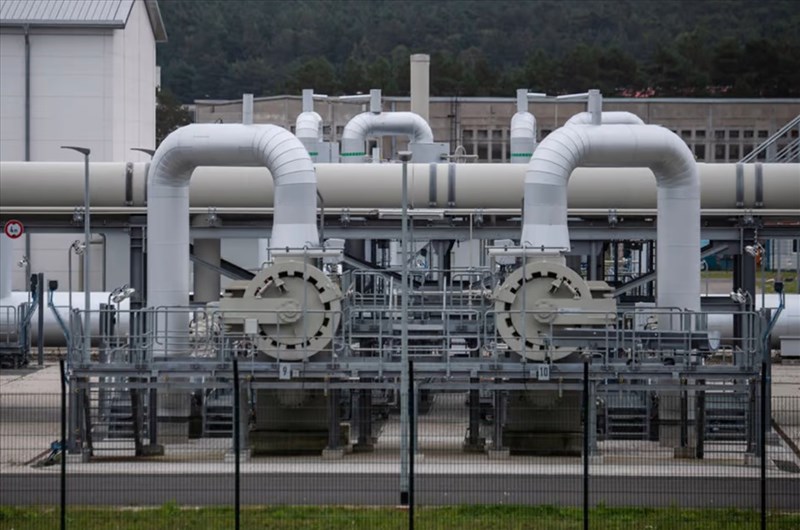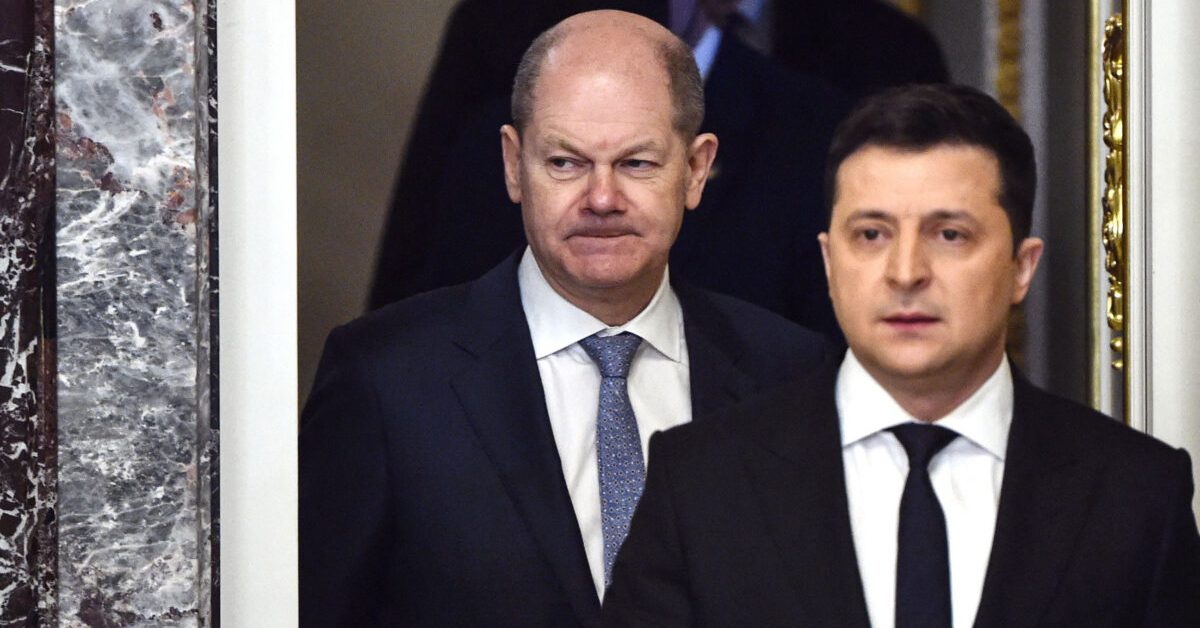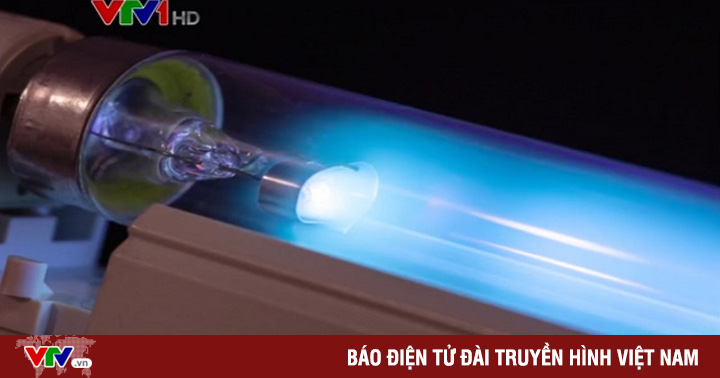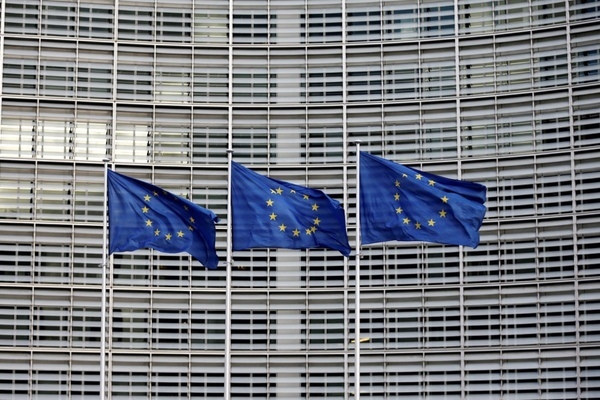Qatar, the tiny kingdom in the Middle East, is emerging as one of Europe’s best hopes for decoupling Russian gas.
Germany, France, Belgium and Italy are in talks with Qatar to sign a long-term contract to buy the country’s liquefied natural gas (LNG), according to officials from both sides. Minister of Economy virtue Robert Habeck traveled to Qatar this month to announce an energy partnership and commit to building its first storage facility to receive LNG shipments from Qatar and other producers.
“This is just the beginning,” Habeck said on March 20.

German Economy Minister Robert Habeck (left) shakes hands with Qatar’s Emir Tamim bin Hamad al-Thani in Doha on March 20. Photo: Reuters.
Qatar has made a fortune in the past two decades selling liquefied natural gas to China, South Korea, Japan and a number of other Asian customers under long-term contracts, bringing the country to less than three million people. become the world’s second largest gas exporter.
Qatar has long wanted to expand its market to Europe. However, customers there used to hesitate, when they had a cheaper supply from Russia. Gas from Russia to Europe can be easily transported using the existing pipeline system, with more flexible short-term contracts.
However, the conflict Ukraine relations between Europe and Russia become more strained than ever. After an unprecedented series of sanctions, Europe announced that it would gradually reduce its dependence on Russian gas and oil. In response, Russia announced that “unfriendly” countries would be freeze gas contract without opening a Russian bank account and paying in rubles.
This spurred Europe to look for new natural gas supplies to replace imports from Russia, which accounts for more than 38% of gas entering the European Union (EU). In addition to Qatar, European countries are also negotiating with manufacturers in Angola, Algeria, Libya and the United States, according to the country’s officials.
Qatar is emerging as one of the most attractive options, as it is planning to spend $28.7 billion on boosting gas production, aiming to increase production output by 40% (about 33 million tons per year). ) by 2026, which could be enough to offset Russia’s LNG exports to Europe. Still, most of Russia’s gas exports to Europe are routed through pipelines.
“Europe is our destination and an important market,” said Qatar’s Energy Minister Saad Sherida al-Kaabi. “We will supply gas to Europe.”
Many other gas producers are pumping at full capacity, but cannot supply more to Europe.
“Qatar was basically at the right time, in the right place, with the right resources,” said Steven Wright, an associate professor of international relations at Hamad Bin Khalifa University in Doha.
However, Qatar is also quite cautious when discussing gas contracts with Europe. Such cooperation agreements can take months to negotiate, and there are currently no closed contracts with European countries. Meanwhile, Qatar also maintains ties with Russia, with billions of dollars in investments.
The West’s attention to Qatar contrasts with its geopolitical position five years ago. Qatar at the time faced a wave of economic and diplomatic boycotts from neighboring countries, including Saudi Arabia. Former US President Donald Trump has called the country a sponsor of terrorism, which Doha denies.
Qatar has mended ties with Saudi Arabia, and the United States has also viewed it as a major non-NATO ally, facilitating numerous joint military exercises and potential arms sales. Qatar played a central role in helping the United States and its allies evacuate thousands of people in Afghanistan after the Taliban took control of Kabul, as well as serving as a support channel for the United States in its nuclear deal negotiations with Iran.
Qatar’s gas will not be a game changer for Europe immediately. The country is pumping at full capacity and sending long-ordered LNG shipments to Asia, where customers such as Japan and South Korea will need to agree for Doha to redirect gas to Europe.
“There will be essentially no excess LNG on the world market,” said Robin Mills, director of energy consultancy Qamar Energy in Dubai.
Qatar estimates that only 10-15% of its LNG can be diverted to Europe in the short term, and these shipments will be more expensive than Russia’s.
“We are planning to increase the long-term contracts with Europe for many years,” a Qatari official said. “Overall, we will have more abundant supply over the next few years, so discussions about long-term contracts will help ensure Europe doesn’t have to face energy shortages again.”

Ras Laffan Industrial City, Qatar’s main liquefied natural gas production site. Photo: AFP.
However, Europe’s plan to replace Russian energy also faces many challenges. Russian gas supplies to Europe are provided quickly and conveniently via pipelines. However, there is currently no gas pipeline from Qatar to Europe, so they must be transported in the form of liquefied petroleum gas.
“Liquefaction of natural gas takes a lot of energy, emits carbon emissions and affects the climate,” said Yousef Alshammari, a senior research fellow at Imperial College London. “It will be difficult for European policymakers to set ambitious climate programs and zero-emissions targets.”
European countries also need infrastructure to receive and store liquefied petroleum gas. These structures will take a long time and cost to build, according to Karen Young, senior fellow at Washington’s Middle East Institute.
“The problem is that Europe is jumping into an LNG market that can’t meet the huge demand right away,” said Nikos Tsafos of the Center for Strategic and International Studies in Washington. “Of course Qatar could send more gas to Europe, but it hasn’t done so yet despite the much higher price of gas sold to Europe. This shows that their gas flows are more tied to Asia than we thought. “.
Thanh Tam (According to WSJ, CNN)
at Blogtuan.info – Source: vnexpress.net – Read the original article here



